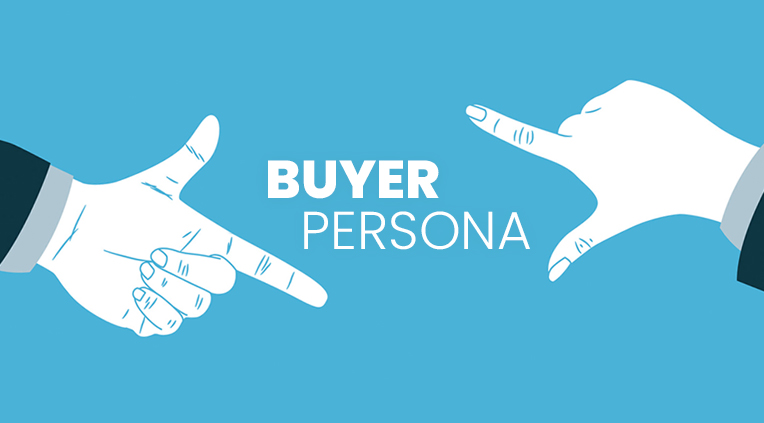The Ultimate Guide to Creating Buyer Personas for your Business

Well-thought and clearly laid out buyer personas can help your business target the right customers. If done correctly, it can help you focus on a specific kind of person that is more likely to buy your product or service, and guide your company’s marketing efforts.
So, we can’t stress enough the importance of having a set buyer persona(s) for your business. It helps you understand your target customer at a deeper level. This will enable you to direct your marketing and advertising efforts to suit their specific needs. So, it significantly improves your chances of converting your potential target customer into a regular buyer.
In this guide, you’ll learn the five essential tips that will help you create the most accurate buyer persona(s) for your business. Moreover, in the end, we’ll also share an example of what a good buyer persona looks like.
What is a Buyer Persona?

A buyer persona is a detailed account of a fictional person’s key characteristics who represents your target audience. Mind you, this is not a real customer. This is just a fictional person who represents the ideal characteristics of your potential customers.
Buyer personas embody the type of individuals who could potentially become your customers or who’d be interested in your offering.
Simply put, buyer personas are the people you are marketing to. You need to understand what your potential customer thinks, sees, does, and feels before you can focus your marketing efforts.
You might be thinking that no two people are the same and of course, you’re correct. But, that doesn’t stop you from grouping together people who possess similar habits, interests, values, or lifestyles. These groups are called customer segments and they contain people who have specific shared characteristics.
How to create a Buyer Persona?

1. Conduct thorough Audience Research
You must base your buyer personas on real-world data and not on gut instinct. Let’s go through a basic overview of what you need to learn about your audience and how can you learn it.
Compile Data of your Existing customers and Social Media audience
For your existing customer and social media followers, you should compile all the demographic data that you can find. You must consider details like:
- Age
- Gender
- Location
- Language
- Spending power and patterns
- Interests and Hobbies
- Challenges
- Stage of life
There is a wide variety of tools that you can use to research and compile the aforementioned data. Let’s take a look at a few such tools:
- Social Media Analytics: You can use the analytics data of your social media channels to understand your current customer and audience on a deeper level.
- Google Analytics: You must also take a look at your site analytics using Google Analytics to understand the demographics of your target customers.
- BuzzSumo: You can use BuzzSumo to search for top shared content across social networks, including engagement data. This will help you understand how your potential customers interact, what do they like, and their interests.
- Online Surveys: You can use Google Forms to conduct online surveys that are specifically directed towards your goals and requirements.
Identify your negative persona
Apart from buyer personas, there are also segments of the crowd that are not your target customers. You must identify such segments as well since it’ll help you determine who you shouldn’t market and advertise to. Knowing who you cannot or should not sell to is integral to understanding who you can sell to.
Identifying negative buyer persona(s) will help you focus on the right audience segment by eliminating the wrong one.
Once you come across a segment of the audience, ask questions like are they interested in what you’re selling? Can they afford it? Can they be satisfied with your product or will they have unrealistic expectations? Asking such questions will help you clearly scrutinize your ideal target audience and avoid the negative personas.
2. Identify the Pain Points of your potential customers
You must thoroughly understand what problems or hassles are your potential customers trying to solve. It’s important to know what’s holding them back from success and the barriers they faced in reaching their goals.
You must engage in some social listening and social media sentiment analysis to get a clearer understanding.
Setting up alerts to monitor mentions of your brand, products, and competitors can show you what people are saying about you online. You can find out why they like your products, or which parts of the customer experience or buyer journey are not working and need improvement.
You should also interact with your customer service team to see what kinds of questions they get the most. See if you can identify some patterns about which groups tend to face the different kinds of challenges. You can do one better by collecting real customer quotes from them that you can later use to help give your buyer personas more depth.
3. Identify Customer Goals
Customer goals are the flip side of pain points. Pain points represent the problems your potential customers are trying to solve. Their goals or aspirations are the positive things they want to achieve.
The goals can be personal or professional, depending on the kinds of products and services you sell. These goals can be directly related to the solutions you provide, but they don’t necessarily have to be. This exercise has more to do with getting to know your customers. The goal here is not to match customers exactly to the features or benefits of your product but to understand them and their needs a little better.
The goals of your buyer personas are important even if they don’t relate directly to your product’s features. You can always use them as the basis of a campaign, or they can help you determine the tone or approach you’ll take in your marketing.
Social listening is a good way to gather this information as well. Just like we recommended you ask your customer service team for some good insights on the pain points, your sales team can provide great insights on customer goals.
Your sales team talk to real people who are contemplating using your product. They have a deeper understanding of what your customers are trying to achieve with your products or services.
You can ask your sales team to collect real quotes that epitomize the customer experience. You can also ask them for any tactics they use to overcome buyer objections when selling your products or services.
4. Understand how your product or service will help
Once you’ve understood the pain points and goals of your customers, you should build a clear picture of how your products and service can help. To start with this, you’ll have to stop thinking about your brand in terms of features. You must dig deeper than that and analyze the benefits you offer to customers.
Buyer personas are important because it can be hard for marketers to get out of the feature mindset. They can help you transform the way you think about your products and services and consider them from the buyer’s perspective.
A feature is what your product is or something that it does. A benefit is how that product or service will improve the lives of your customers.
For each of the pain points and goals that you’ve collected, ask yourself the following 3 questions:
- How can we help?
Answer this in one clear sentence and add it to your persona template. - What are your audience’s main purchasing barriers?
Understand what stops and bars your customers from making the final purchase and how can you help overcome them. - Where exactly do the potential customers lie in the buyer’s journey?
Maybe they’re ready to buy or maybe they’re just looking for reviews and comparing different options. Knowing what stage of buyer’s journey they’re at will help you better target them.
Moreover, you should talk to your colleagues who deal directly with customers to get a deeper understanding. You should also consult your customers and social fans directly through a survey to get direct feedback from your target market.
5. Creating a Buyer Persona
Now that you’ve done all your research, you can start compiling the data to determine common characteristics. Start by grouping the common characteristics together and as you do that, you’ll have the basis of your unique buyer personas.
At the start, your buyer personas will just be an abstract collection of characteristics. You need to turn these abstract characteristics into a persona that you can identify with and speak to.
Give your buyer persona a name, a job title, a home, and other defining characteristics. You want your buyer persona to seem like a real person as far as possible. Make sure to include all the pain points, goals, and aspirations. Be as descriptive and imaginative as you can while figuring out the buyer personas for your business. Take input from all your teams so that no stone is left unturned.
Here’s a sample of a buyer persona:
Name: Matt Blake
Age: 32 years old
Married with one child, seven years old
Owns a pet Cat
Lives in the suburbs
Works as a Software Developer at a tech company
Drives an SUV
Enjoys hiking and camping
Wants to keep his family active and healthy
Is looking to get a promotion
Doesn’t have enough free time – busy work life
Active on Facebook, Instagram, and YouTube
If your buyer persona looks somewhat like this or is more descriptive, then you’re on the right track!
Using Buyer Personas
Using the simple buyer persona(s), like the one shown above, your business could develop a marketing and advertising strategy, highlighting how their product helps that specific buyer persona.
Note that one person cannot always represent an entire customer segment. But, they’re still a good representation of who your ideal customer is in any given segment. If felt necessary, you can always create multiple buyer personas to include all your varied potential customers.
Use the buyer persona(s), you can plan your advertising and marketing campaigns so that your efforts are targeted towards the right potential consumers.
Developing Buyer Personas is an ongoing process
Ideally, the buyer personas for your business should always be a work in progress. You must continue learning from your customers in order to better sell to them. Utilize the buyer personas to determine how to create relevant social media content and precise advertising campaigns.
You should always have a clear understanding of how your customers think, see, and feel about your product or service. Having such a thorough understanding is the key to generating better leads for your business.
We hope this article was helpful in guiding you through the process of creating buyer personas for your business. If you’ve got any questions, you can let us know in the comments below or write to us and we’d be happy to help you out!
Want to explore which Business Financing product is right for you? Get in touch with us today and we will help you out!


Write a reply or comment
You must be logged in to post a comment.